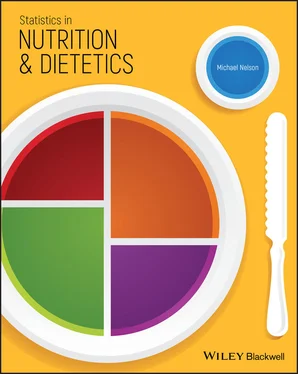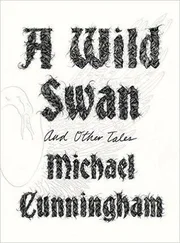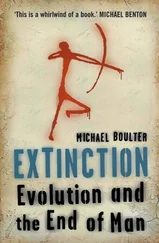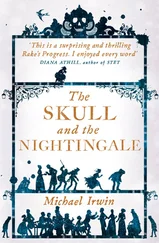1 Cover
2 About the Author
3 Preface Preface WHY IS THIS BOOK NEEDED? Worldwide, there is no basic statistics textbook that provides examples relevant to nutrition and dietetics. While it could be argued that general medical science statistics texts address the needs of nutrition and dietetics students, it is clear that students find it easier to take on board the concepts relating to statistical analysis and research if the examples are drawn from their own area of study. Many books also make basic assumptions about students' backgrounds that may not always be appropriate, and use statistical jargon that can be very off‐putting for students who are coming to statistics for the first time.
WHY IS THIS BOOK NEEDED? WHO IS THIS BOOK FOR? WHO IS THIS BOOK FOR? The book is aimed at undergraduate and postgraduate students studying nutrition and dietetics, as well as their tutors and lecturers. In addition, there are many researchers in nutrition and dietetics who apply basic statistical techniques in the analysis of their data, for whom a basic textbook provides useful guidance, and which helps to refresh their university learning in this area with examples relevant to their own field.
LEVEL AND PRE‐REQUISITE LEVEL AND PRE‐REQUISITE The level of the material is basic . It is based on a course that I taught at King's College London over many years to nutrition and dietetics students, physiotherapists, nurses, and medical students. One of the aims was to take the fear and boredom out of statistics. I did away with exams, and assessed understanding through practical exercises and coursework. This book takes you only to the foothills of statistical analysis. A reasonable competence with arithmetic and a little algebra are required. For the application of more demanding and complex statistical techniques, the help of a statistician will be needed. Once you have mastered the material in this book, you may want to attempt a more advanced course on statistics.
AIMS AND SCOPE AIMS AND SCOPE The aim of this book is to provide clear, uncomplicated explanations and examples of statistical concepts and techniques for data analysis relevant to learning and research in nutrition and dietetics. There are lots of short, practical exercises to work through. These support insight into why various tests work. There are also examples of SPSS 1 output for each test. This makes it is possible to marry up the outcomes computed manually with those produced by the computer. Examples are taken from around the globe relating to all aspects of nutrition, from biochemical experiments to public health nutrition, and from clinical and community practice in dietetics. All of this is complemented by material online, including data sets ready for analysis, so that students can begin to understand how to generate and interpret SPSS output more clearly. The book focuses on quantitative analysis. Qualitative analysis is highly valuable, but uses different approaches to data collection, analysis, and interpretation. There is an element of overlap, for example when quantitative statistical approaches are used to assess opinion data collected using questionnaires. But the two approaches have different underlying principles regarding data collection and analysis. They complement one another, but cannot replace one another. Two things this book is not. First, it is not a ‘cookbook’ with formulas. Learning to plug numbers in to formulas by rote does not provide insight into why and how statistical tests work. Such books are good for reminding readers of the formulas which underlie the tests, but useless at conveying the necessary understanding to analyze data properly or read the scientific literature intelligently. Second, it is not a course in SPSS or Excel. While SPSS and Excel are used to provide examples of output (with some supporting syntax for clarity), it is no substitute for a proper course in computer‐based statistical analysis.
CONTENTS CONTENTS This textbook is based on over 20 years of teaching experience. There are four parts:
ONLINE ONLINE No textbook is complete these days without online resources that students and tutors can access. For this textbook, the online elements include: Teaching toolsTeaching notesPowerPoint slides for each chapterSPSS data, syntax, and output files Learning resources:Links to online software and websites that support learning about statistics and use of statistical software
TEACHING TOOLS TEACHING TOOLS Teaching notes For lecturers delivering courses based on the textbook, I have prepared brief teaching notes. These outline the approach taken to teach the concepts set out in the textbook. I used traditional lecturing coupled with in‐class work, practical exercises, homework, and research protocol development. My current practice is to avoid exams for any of this material. Exams and formal tests tend to distract students from revision of study materials more central to their course. Some students get completely tied up in knots about learning stats, and they fret about not passing the exam, ultimately to their academic disadvantage.
4 Acknowledgements
5 About the Companion Website
6 PART 1: SETTING THE STATISTICAL SCENE PART 1 SETTING THE STATISTICAL SCENE Learning Objectives You should be reading this textbook because you want to: Learn how to design and analyze research projects Develop the skills to communicate the results and inferences from research Learn to evaluate the scientific literature The ideas upon which these skills are founded – an understanding of the scientific method, an introduction to different models of scientific investigation, and the statistical tools to understand the significance of research findings – form the core of this book. Practical, worked examples are used throughout to facilitate an understanding of how research methods and statistics operate at their most fundamental level. Exercises are given at the end of each chapter (with detailed, worked solutions at the end of the book, with more examples and solutions online) to enable you to learn for yourself how to apply and interpret the statistical tools.
CHAPTER 1: The Scientific Method CHAPTER 1 The Scientific Method Learning Objectives After studying this chapter you should be able to: Describe the process called the scientific method: the way scientists plan, design, and carry out research Define different types of logic, hypotheses, and research designs Know the principles of presenting data and reporting the results of scientific research
1.1 KNOWING THINGS 1.2 LOGIC 1.3 EXPERIMENTATION AND RESEARCH DESIGN 1.4 THE BASICS OF RESEARCH DESIGN 1.5 NEXT STEPS 1.6 RESEARCH DESIGN 1.7 DATA, RESULTS, AND PRESENTATION 1.8 READING 1.9 EXERCISES REFERENCES CHAPTER 2: Populations and Samples 2.1 DEFINING POPULATIONS AND SAMPLES 2.2 MEASURES OF CENTRAL TENDENCY 2.3 WEIGHTING AND WEIGHTED AVERAGES 2.4 MEASURES OF VARIATION: RANGE, QUANTILES, AND THE STANDARD DEVIATION 2.5 THE RELATIONSHIP BETWEEN SAMPLES AND POPULATIONS 2.6 BE PATIENT AND DON’T GIVE UP 2.7 GLOSSARY 2.8 EXERCISES CHAPTER 3: Principles of Measurement 3.1 INTRODUCTION 3.2 TYPES OF RESEARCH 3.3 TYPES OF MEASUREMENT 3.4 MEASUREMENT SCALES 3.5 RELIABILITY, VALIDITY, AND ERROR 3.6 BIAS AND GENERALIZABILITY 3.7 RELIABILITY AND VALIDITY IN QUALITATIVE RESEARCH 3.8 CONCLUSION 3.9 EXERCISES REFERENCES CHAPTER 4: Probability and Types of Distribution 4.1 INTRODUCTION 4.2 TYPES OF PROBABILITY DISTRIBUTION 4.3 SAMPLING ERROR 4.4 TRANSFORMATIONS 4.5 EXERCISES REFERENCES CHAPTER 5: Confidence Intervals and Significance Testing 5.1 INTRODUCTION 5.2 CONFIDENCE INTERVALS AND CONFIDENCE LIMITS 5.3 LEVELS OF SIGNIFICANCE 5.4 A TEST STATISTIC 5.5 EXERCISES REFERENCE
Читать дальше












